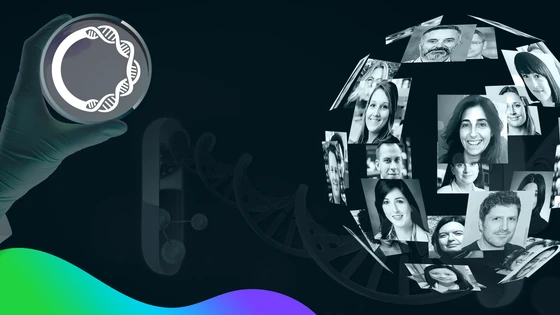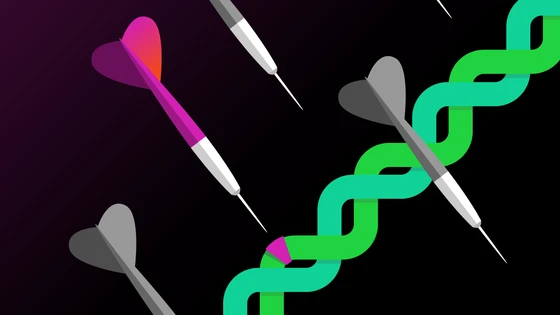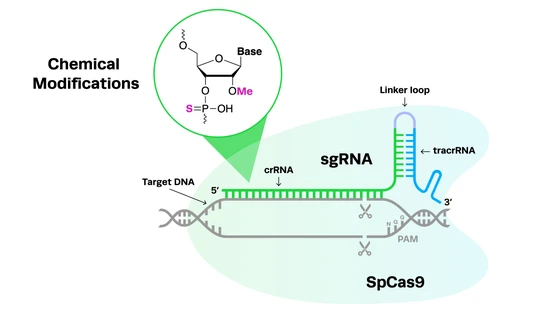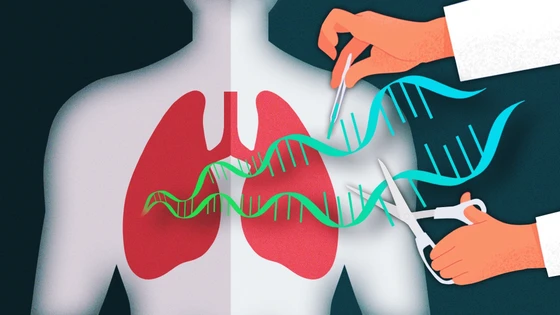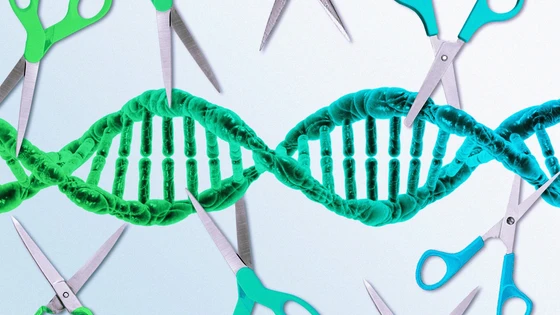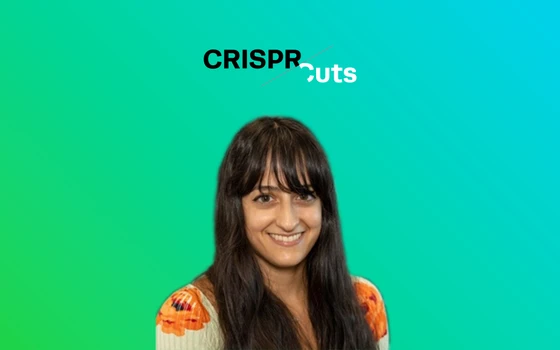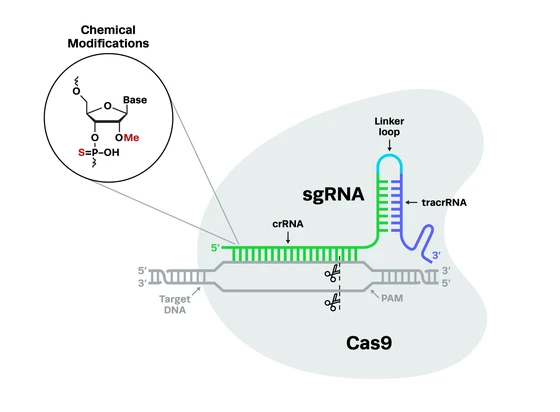Contents
October 20th of 2021 marked the second virtual World CRISPR Day, with over 12,000 registrants participating online and almost 30 CRISPR experts speaking about their latest research. This year’s conference had a more specific focus on medical applications of CRISPR editing, and some extra special features including interactive components and live entertainment.
The conference began with opening remarks from Synthego’s head of science, Dr. Kevin Holden, and CEO, Paul Dabrowski, followed by an inspiring keynote address from the Innovative Genomics Institute’s Dr. Fyodor Urnov. Three sessions of short talks then covered key areas of current CRISPR research, and the meeting concluded with a Women of CRISPR panel interview. In an exciting development, WCD 2021 also featured live performances from renowned rap artist Baba Brinkman and his team and a magic show by Robert Strong.
If you missed WCD 2021, never fear! We’ve put together a brief summary of all the conference sessions in this blog post.
World CRISPR Day 2021 Opening remarks
Synthego’s Head of Science, Dr. Kevin Holden, kicked things off by welcoming the online attendees and introducing the theme of this year’s conference, which was ‘Editing for the Future of Medicine’. Dr. Holden highlighted the importance of CRISPR technology in producing new cell and gene therapies, providing more accurate models of human disease, and generating new technologies that will enable the next generation of genome engineering tools, therapies, and diagnostics.
Paul Dabrowski, CEO of Synthego, then provided his opening remarks, beginning with a brief overview of the history of cell and gene therapies, describing the transformative potential of CRISPR technologies to fix the root cause of genetic diseases. He noted that one-third of medical treatments in the near future are predicted to be cell and gene therapies, with CRISPR-based therapies likely to make up a sizable portion of these.
Dabrowski emphasized Synthego’s mission to increase the safety and scalability of CRISPR-based therapies through the Halo™ and Eclipse™ platforms and GMP manufacturing facilities. He concluded that lowering the cost and increasing access to CRISPR therapies could improve millions of lives.
"Mark these words: What we decide to do now, with CRISPR, will shape the future of the world for centuries to come"
Paul Dabrowski, CEO of Synthego
Keynote Address from Dr. Fyodor Urnov: ‘Imagine CRISPR Cures’
Dr. Fyodor Urnov, Professor of Genetics, Genomics, and Development, and Director for Technology and Translation at UC Berkeley’s Innovative Genomics Institute (IGI), delivered a passionate keynote address. Entitled ‘Imagine CRISPR Cures’, the talk began with a realistic look at the challenges of developing CRISPR treatments and problems with the clinical development pipeline. As described by Dr. Urnov, the current framework for developing CRISPR cell and gene therapies was determined in the before-CRISPR (BC) era, from 2006 onwards.
The current outdated pipeline, including the enormous costs and lengthy timescales, is incompatible with the promise of CRISPR to edit any genetic disorder. However, Dr. Urnov then described how the framework can be restructured to enable more rapid development of CRISPR treatments for the >5,000 monogenic disorders that are currently known. He extended this to diseases caused by ultra-rare mutations and N=1 cases, asserting that these will be broadly informative and enabling.
"We need a fundamentally new CRISPR for N=1 framework. This is an issue of health justice"
Dr. Fyodor Urnov, UC Berkeley, Innovative Genomics Institute
Dr. Urnov insisted that scientists need to eliminate path-dependant solutions and outdated attitudes, adopting an innovative approach to the clinical development pipeline. His suggestions include collaboration with regulators like the FDA, developing better models and assays for disease modeling, and advancing rapid analytics and next-generation assays for monitoring safety and efficacy.
The work of the IGI formed the final section of Dr. Urnov’s talk. He described how the IGI, led by his colleague Dr. Jennifer Doudna, focuses on science with a social purpose, employing an ‘Avengers approach’ to solving big problems. By forming cross-functional teams of researchers with unique ‘superpowers’, Dr. Urnov says, the IGI aims to develop scalable, affordable CRISPR treatments for diseases, such as hemoglobinopathies, and CRISPR companion diagnostics to make treatments safer.
Session 1: Cell and Gene Therapy
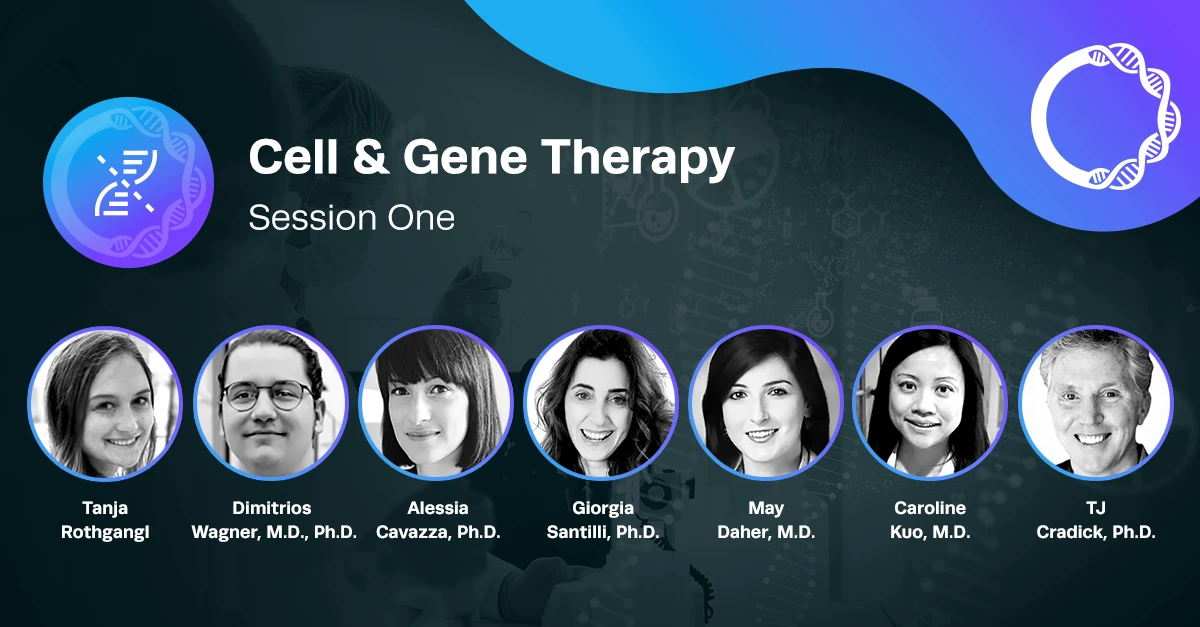
Following the keynote address came updates on the latest progress in the CRISPR cell and gene therapy field, with seven leading researchers describing their work. To begin the session, Tanja Rothgangl, a Ph.D. candidate from the University of Zurich, discussed the use of lipid nanoparticles (LNPs) to deliver adenine base editors (ABEs) in mice. Rothgangl also described her recent study employing adenine base editors (ABEs) to edit the PCSK9 gene in vivo, successfully reducing cholesterol levels in macaques.
The second talk was given by Dr. Dimitrios Wagner, Head of Research and Development at the Berlin Center for Advanced Therapies, who works on engineered T cells. Dr. Wagner spoke about engineering gene knockout and gene knock-in T cells for transplant medicine and cancer treatment. He described a drug-resistant T cell therapy which is approaching the first testing in human patients, as well as virus-free TCR-replaced CAR-T cell therapy.
Dr. Alessia Cavazza and Dr. Giorgia Santilli then delivered a joint presentation about their work at University College London on genome editing in hematopoietic stem cells to treat primary immunodeficiencies, including X-linked Agammaglobulinemia (XLA). Their research demonstrated that gene editing was able to rescue the differentiation of B cells from HPSCs in two XLA patients. They also discussed their pre-clinical work on Wiscott-Aldrich syndrome (WAS), including the feasibility of large-scale cell product manufacturing and genotoxicity analysis.
Dr. May Daher, Assistant Professor at the MD Anderson Cancer Center, discussed several different CRISPR cell therapies, including the SARS-CoV-2-specific T cell biobank. This project generated SARS-CoV-2-specific T cells and used them to treat 15 patients, with data suggesting the treatment is safe and effective. She also described the use of CAR natural killer (NK) cells to treat patients with relapsed/refractory B-lymphoid malignancies, a treatment that was able to improve tumor control and survival in a mouse model.
The next talk was from Dr. Caroline Kuo, Assistant Professor at UCLA, who spoke about treating the rare primary immunodeficiency, X-linked hyper IgM syndrome. By engineering hematopoietic stem cells for targeted integration of CD40L cDNA, they were able to restore normal physiological responses of T cells to immune stimuli.
The final presentation was from Dr. TJ Cradick, CSO of Excision BioTherapeutics, who discussed the one-treatment CRISPR-based therapy for HIV known as EBT-101. This strategy uses two guide RNAs to target multiple sites within the HIV genome; by targeting the viral genome and removing it, there is minimal risk of off-target editing.
Session 2: Disease Modeling and Research
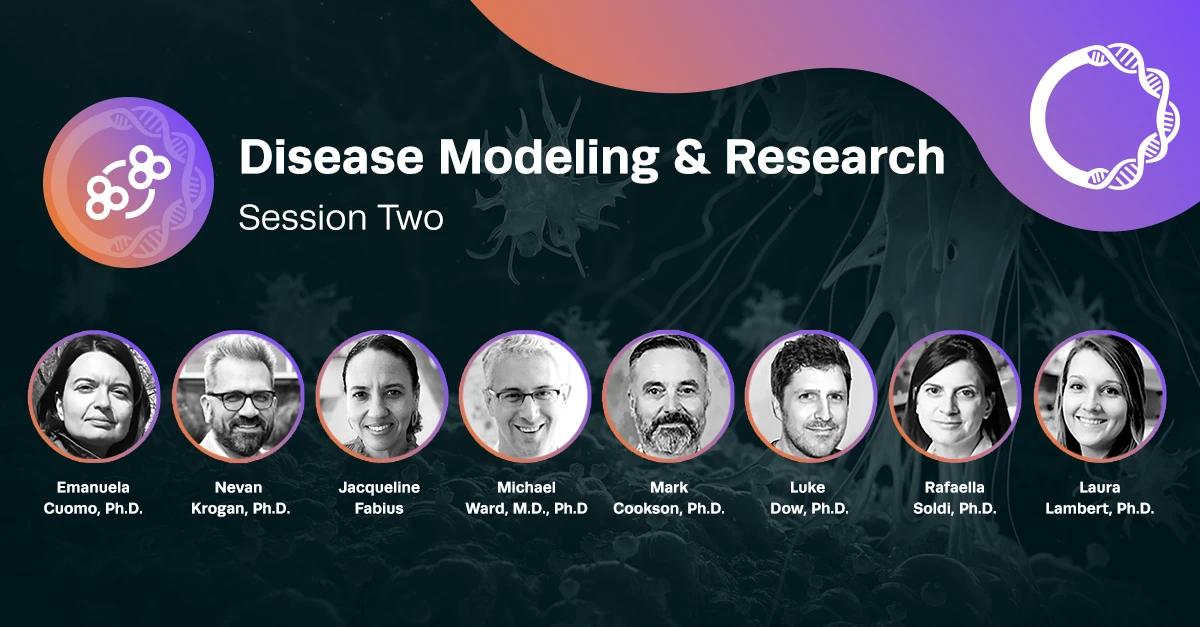
The disease modeling session covered a range of topics, including mapping protein-interaction networks for infectious disease, generating more accurate models of disease in stem cells and animals, and building platforms for immuno-oncology drug discovery. Dr. Emanuela Cuomo of AstraZeneca began by discussing the need to identify and validate targets with a higher chance of success earlier in the drug discovery pipeline and harnessing gene-editing tools for this purpose.
The second presentation was given by Dr. Nevan Krogan and Dr. Jacqueline Fabius of UCSF. The collaborators spoke about host-pathogen protein-protein interaction maps, including for SARS-CoV-2, and a strategy for high-throughout, arrayed CRISPR gene knockouts in human T cells.
The next talk was also a joint presentation, from Dr. Michael Ward and Dr. Mark Cookson. The NIH researchers discussed the achievements of their latest iNDI project, which generated models for neurodegenerative diseases, including Alzheimer’s disease and related dementias (ADRDs).
Dr. Luke Dow, Associate Professor at Weill Cornell Medicine, next spoke about interrogating the cancer genome at base-pair resolution. Dr. Dow spoke about the potential of base editors (BEs) in cancer modeling and research, due to the fact that most cancer mutations are C to T transitions.
Dr. Raffaella Soldi then gave a talk about using a CRISPR screening approach to identify novel therapies for Ewing’s sarcoma, a rare and aggressive cancer. Dr. Soldi and her colleagues at the Translational Genomics Research Institute were able to identify the ABL2 gene as a target to enhance the cytotoxicity of SP2577, promoting apoptosis in response to treatment with SP2577.
Finally, Dr. Laura Lambert described the use of CRISPR to create precision animal models of rare diseases. Dr. Lambert’s work as Assistant Professor and Director of the Transgenic and Genetically Engineered Models (TGEM) core facility at the University of Alabama at Birmingham covers many projects, including gene rescue in translational animal models of neurofibromatosis and nanoparticle gene therapies in mice.
Session 3: Discovery and Innovation
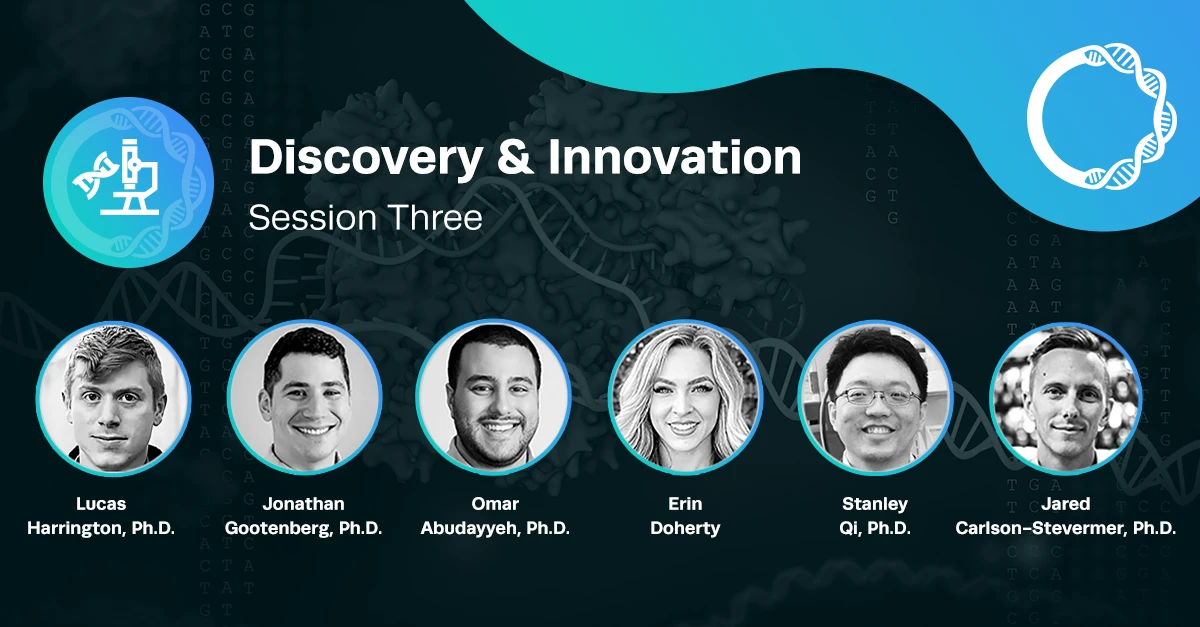
The third symposium of the day focused on the development of new genome and transcriptome tools to help enable next-gen genome editing tools, safety measures, therapies, and diagnostics. Dr. Lucas Harrington, CSO of Mammoth Biosciences, kicked off the session with a look at the diversity of CRISPR systems, including the identification of ultracompact CRISPR systems from uncultivated microbes. He also discussed Mammoth’s DETECTR diagnostic tool for SARS-CoV-2.
A joint presentation from MIT researchers Dr. Jonathan Gootenberg and Dr. Omar Abudayyeh followed, in which the long-term collaborators spoke about harnessing novel CRISPR systems. The main focus of their talk was the latest CRISPR nuclease, Cas7-11, which the pair recently discovered. This nuclease can edit RNA without inducing the collateral activity which prevented Cas13 from being used for therapeutic RNA editing.
Dr. Stanley Qi then gave a presentation about how researchers can use CRISPR tools for different purposes, and the challenge of using CRISPR technologies more safely and effectively in vivo, both in animal models and in human subjects. Dr. Qi’s lab at Stanford developed the smallest functional Cas nuclease, known as CasMINI.
Erin Doherty, a Ph.D. candidate at UC Davis, finished the session by discussing site-directed RNA editing with adenosine deaminases acting on RNA (ADARs). ADARs can be used to edit pathogenic mutations at the RNA level by using complementary guides to direct them to the target site, and the talk focused on the design of these guides.
Panel: Women of CRISPR
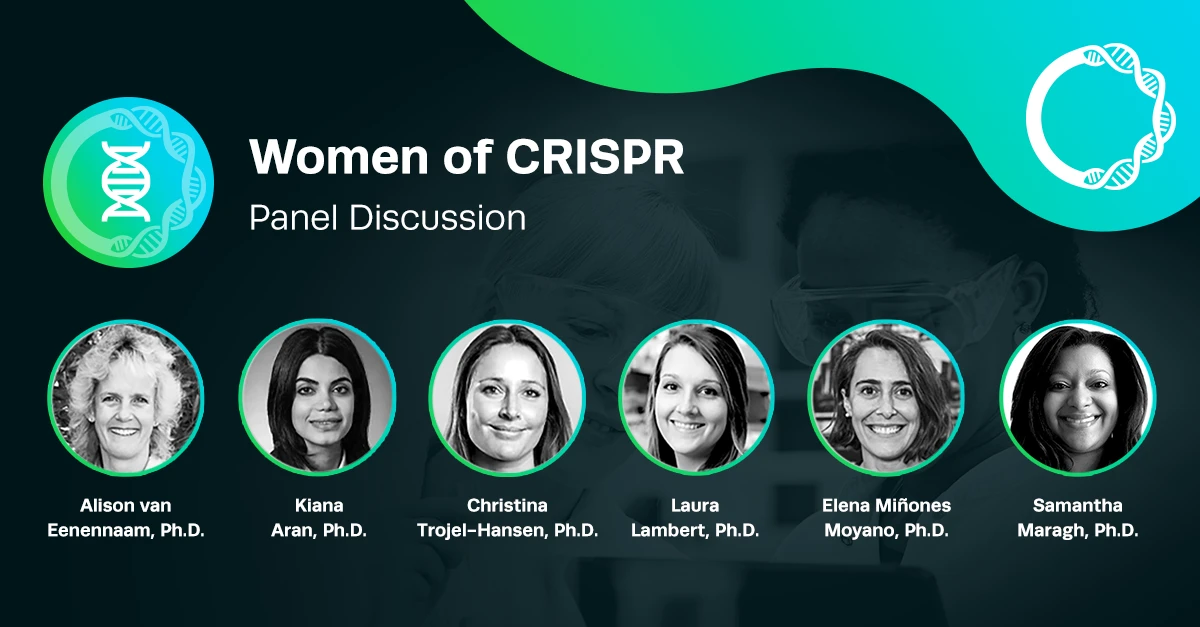
Speakers:
Meenakshi Prabhune, Ph.D., Sr. Scientific Marketing Manager, Synthego
Alison van Eenennaam, Ph.D., Professor of Cooperative Extension, University of California, Davis
Kiana Aran, Ph.D., Chief Scientific Officer, Cardea Bio
Christina Trojel-Hansen, Ph.D., Founding CEO, NewCo
Laura Lambert, Ph.D., Assistant Professor & Director of the Transgenic and Genetically Engineered Models (TGEM) Core Facility, The University of Alabama at Birmingham
Elena Miñones Moyano, Ph.D., Director, Technical Support & Customer Success, Synthego
Samantha Maragh, Ph.D. Leader, Genome Editing Program, National Institute of Standards and Technology
Description:
A special highlight of the conference was the Women of CRISPR panel discussion. Dr. Meenakshi Prabhune, Synthego’s senior scientific marketing manager, led the discussion between six female leaders in the field of CRISPR research, all of whom have very different backgrounds and career paths. The panel members shared their thoughts and experiences, discussing the challenges of working in male-dominated fields, work-life balance, mentorship, gender and racial discrimination, and how they overcame these struggles.
Despite the various issues these incredible women have faced in their careers, the key attitude shared by all of the panel members was one of positivity and resilience. As several panelists noted, the difficulty many women have with being assertive and believing in themselves lessens with career progression. Some of the panelists' advice included emphasizing commonalities while embracing and celebrating differences, initiating conversations to discover how biases are formed, and focusing on positive opportunities and learning experiences.
We hope this post helped you get an overview of our second ever World CRISPR Day. If any of the sessions we’ve described piqued your interest, or you want to watch your favorite symposium again, they are now available to watch online. You can also subscribe to our blog, The Bench, for all the latest CRISPR news and updates.
